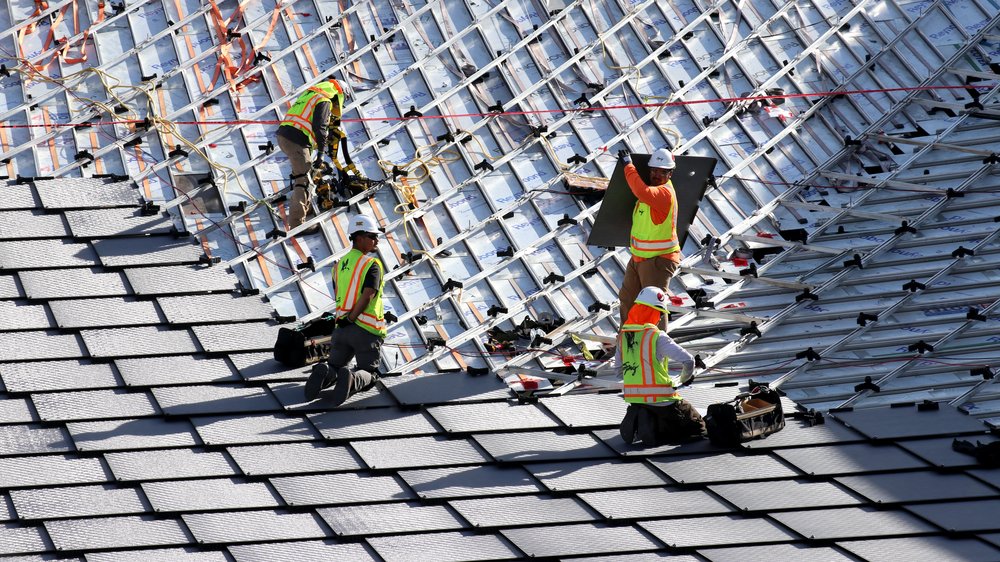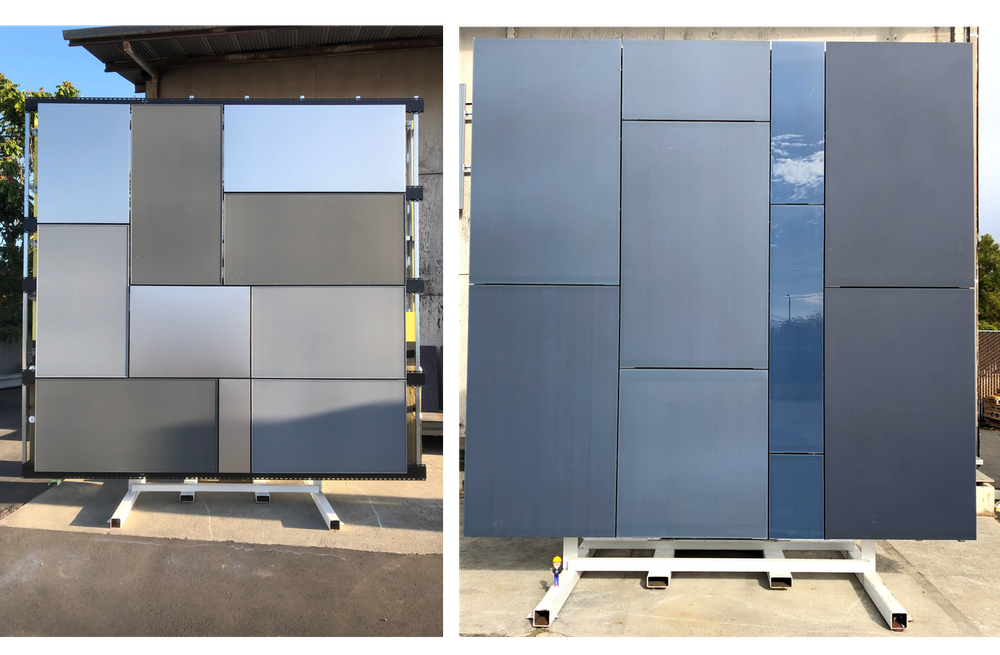Earlier this year,
Dragonscale: a beautiful approach to solar
These panels coupled with the pavilion-like rooflines let us capture the power of the sun from multiple angles. Unlike a flat roof, which generates peak power at the same time of the day, our dragonscale solar skin will generate power during an extended amount of daylight hours. This will limit our contribution to California’s notorious duck curve — which tracks the difference between energy demand and the available solar energy throughout the day. When up-and-running, Charleston East and Bay View will have about 7 megawatts of installed renewable power—generating roughly 40% of their energy needs.
Shortly after construction began, we couldn’t help but think about how we might make this form-and-function approach to building design more scalable. After all, we can’t custom design and develop a new solar solution for every project.

The construction team installs BIPV at Google’s Bay View office development. Photo by Christopher Mcanneny, Heatherwick Studio.
Going mainstream with learnings from dragonscale
Solar panels that are integrated into the design of the building, rather than added later, are known as building-integrated photovoltaics (BIPV). Integrating solar panels into a roof, like we did with dragonscale, is one approach to using BIPV. Another is incorporating them into the skin of the building. But again, the challenge is to do it in a way that looks good.
The constraints of traditional manufacturing processes also make BIPV projects more difficult. Currently, buildings featuring integrated solar panels require custom designed and manufactured panels, which only niche producers using flexible manufacturing processes with limited output can produce. For our newer buildings, we chose to use a standard solar panel size (3 feet by 5 feet) with standard panel mounts in our designs. This allowed us to use more prevalent, high-volume manufacturing processes so that production and installation could ramp up quickly and at scale.
In a relatively short amount of time, we were able to work with different manufacturers, experiment with a range of facade aesthetics, land on a few designs and share them with our construction teams. Today, two of our newer projects in the Bay Area are implementing these facade photovoltaic panels.

Two examples at our R+D Lab of exploring how to add photovoltaics on facades: rearranging standard solar panels into more visually interesting mosaics (left) and integrating solar into standard window framing (right).
Investing in sustainable energy innovations will not only get us closer to our goal to be carbon free by 2030, but it will also help our partners and others get there. We hope that sharing our approach to blending design, aesthetics and manufacturing will inspire more projects like it.













